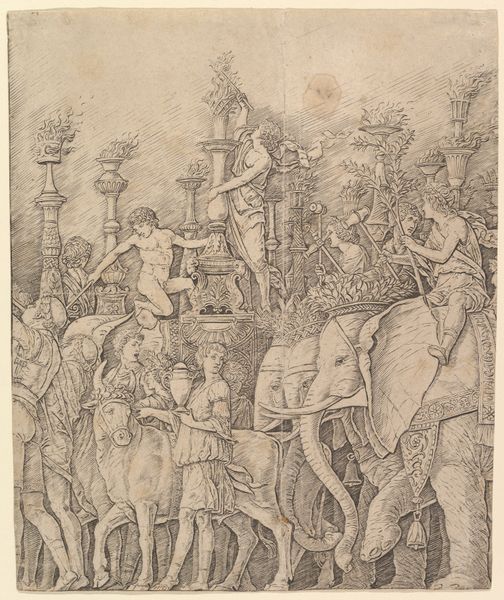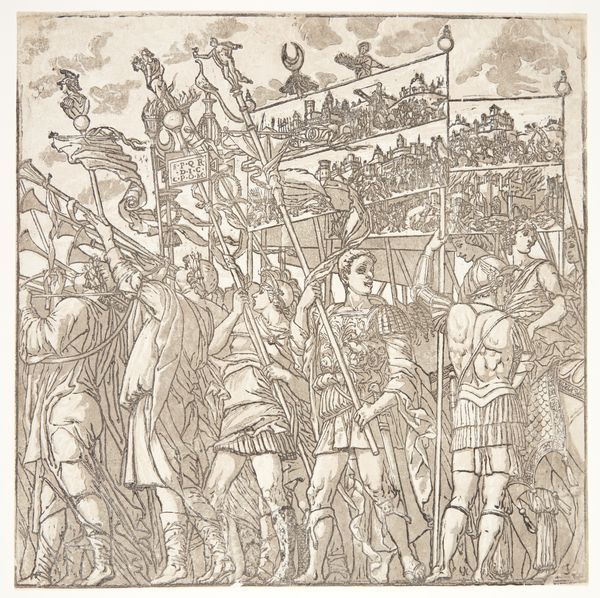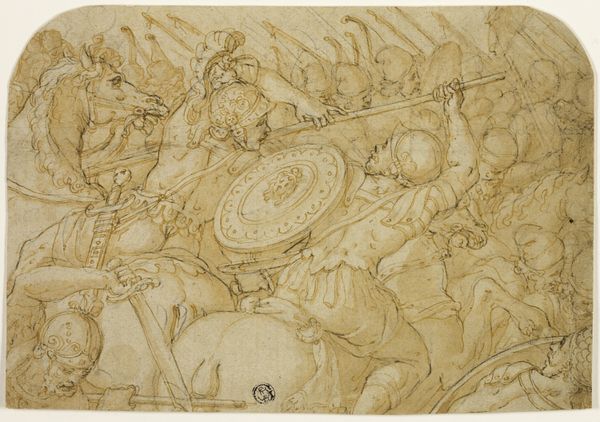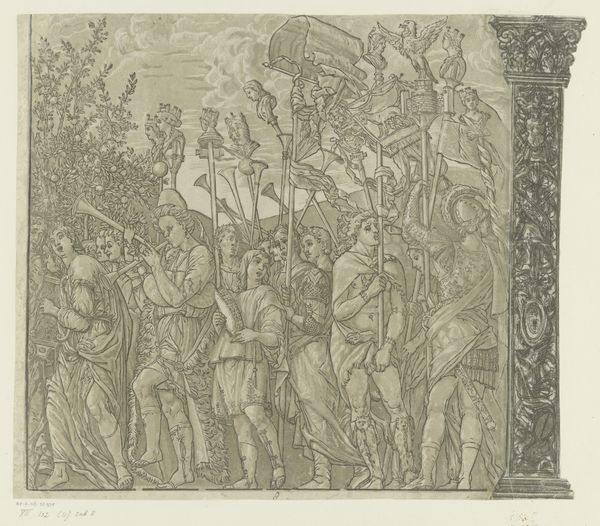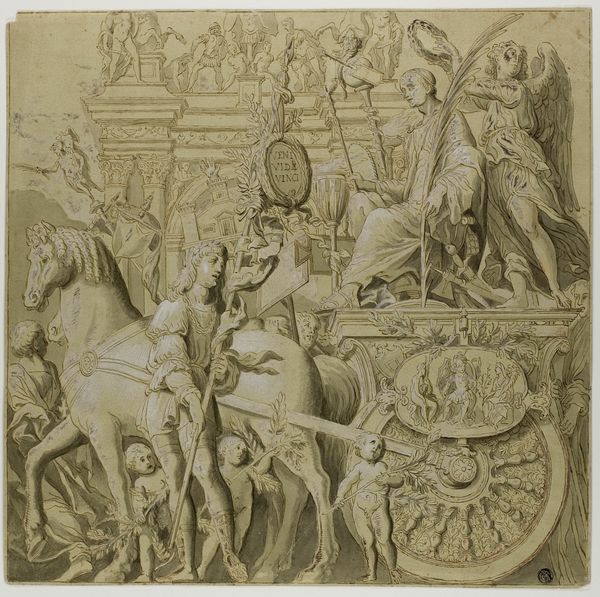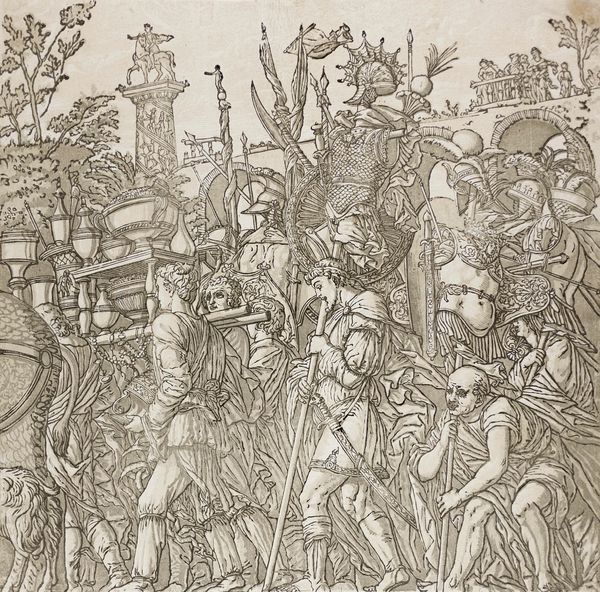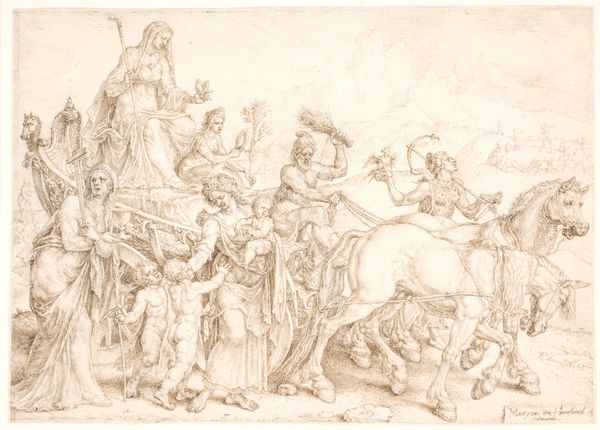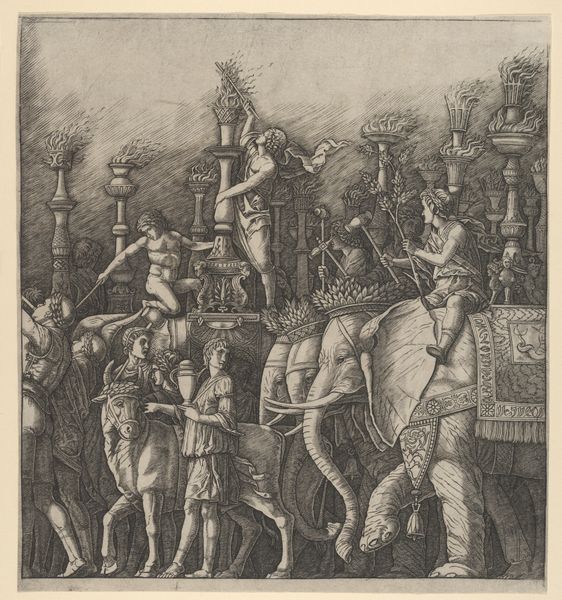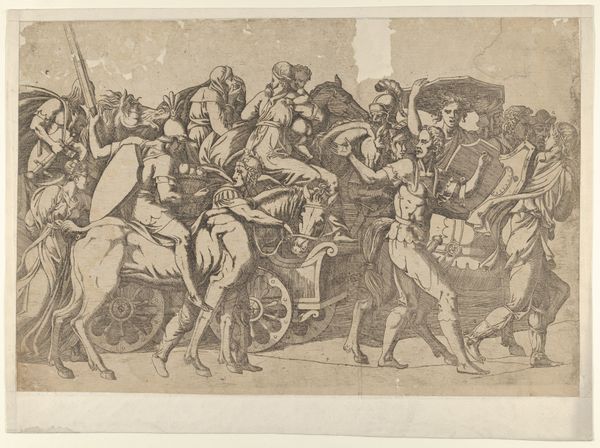
drawing, print, engraving
#
drawing
#
allegory
# print
#
landscape
#
figuration
#
11_renaissance
#
coloured pencil
#
history-painting
#
italian-renaissance
#
engraving
Dimensions: Sheet: 9 5/8 × 10 5/16 in. (24.5 × 26.2 cm)
Copyright: Public Domain
Andrea Mantegna made this image, Triumph of Julius Caesar, using pen and brown ink on paper. The process of drawing with pen and ink allowed Mantegna to achieve fine details and subtle tonal variations. The ink, made from tannin and iron salts, would have been carefully applied to the paper surface, each stroke meticulously placed to create the overall composition. The quality of the paper itself, likely handmade, would have influenced the absorption and flow of the ink, adding to the unique character of the drawing. The making of this artwork involved significant labor, from the preparation of the drawing materials to the time-consuming task of rendering the detailed figures and intricate scenes. The work involved, both physical and intellectual, reflects the dedication and skill required to produce such a refined piece of art. Paying attention to materials, making and context, highlights the amount of work that went into such a complex piece of artwork. This challenges traditional distinctions between fine art and craft, and allows us to appreciate the labor involved in creating such artwork.
Comments
No comments
Be the first to comment and join the conversation on the ultimate creative platform.
